Active Recombinant Firefly Luciferase Protein (1-550), N-His-tagged
| Cat.No. : | Luciferase-787F |
| Product Overview : | Recombinant firefly Luciferase (1-550), fused to His-tag at N-terminus, was expressed in E. coli and purified by using conventional chromatography techniques. |
| Availability | November 05, 2025 |
| Unit | |
| Price | |
| Qty |
- Specification
- Gene Information
- Related Products
- Citation
- Case Study
- Application
- Download
| Species : | Firefly |
| Source : | E.coli |
| Tag : | His |
| Protein Length : | 1-550 |
| Description : | Luciferase is a generic term for the class of oxidative enzymes used in bioluminescence and is distinct from a photoprotein. Luciferase catalyzes a bioluminescent reaction which requires the substrate luciferin as well as Mg2+ and ATP, produces green light with a wavelength of 562 nm. Luciferase from firefly is widely used as a reporter for studying gene regulation and function, and for pharmaceutical screening. |
| Form : | Liquid |
| Bio-activity : | Specific activity is 1×10^10 lightunit/mg. One luciferase enzymeunit will produce one Relative Light Unit (RLU) at 25 centigrade. |
| Molecular Mass : | 63 kDa (571aa) confirmed by MALDI-TOF |
| AA Sequence : | |
| Purity : | > 90% by SDS-PAGE |
| Applications : | SDS-PAGE, Enzyme Activity |
| Storage : | Can be stored at +2 to +8 centigrade for 1 week. For long term storage, aliquot and store at -20 to -80 centigrade. Avoid repeated freezing and thawing cycles. |
| Concentration : | 1 mg/mL (determined by Bradford assay) |
| Storage Buffer : | 20mM Tris-HCl buffer (pH 8.0) containing 1mM DTT, 10% glycerol |
| Publications : |
The effect of spin exchange interaction on protein structural stability (2022)
|
| Official Symbol | Luciferase |
| Synonyms | Luciferase; Luciferin 4-monooxygenase, LuC |
| UniProt ID | A3KBZ5 |
| ◆ Recombinant Proteins | ||
| Luciferase-01F | Active Recombinant Firefly Luciferase, Thermostable | +Inquiry |
| Luciferase-06R | Recombinant Renilla Luciferase, His tagged, Protein G Labeled | +Inquiry |
| Luciferase-08F | Recombinant Fire fly Luciferase | +Inquiry |
| Luciferase-5683P | Recombinant Photinus pyralis Luciferase Protein (Met1-Lys548), N-His tagged | +Inquiry |
| Luciferase-11F | Recombinant Protein G-Firefly Luciferase Fusion Protein, His-tagged | +Inquiry |
| ◆ Native Proteins | ||
| Luciferase-09F | Active Native Firefly Luciferase | +Inquiry |
| Luciferase-10V | Native Vibrio fischeri Luciferase | +Inquiry |
Cry Protein Crystals: A Novel Platform for Protein Delivery
Journal: PLoS ONE PubMed ID: 26030844 Data: 2015/6/1
Authors: Manoj S. Nair, Marianne M. Lee, Raffi V. Aroian
Article Snippet:The protein concentrations of Cry3Aa-luciferase crystal and recombinant Firefly luciferase protein (Creative BioMart) were determined using the Bradford protein assay (BioRad).. Measurement of the in vivo luminescence was performed on an IVIS 100 system (Xenogen).Measurement of the in vivo luminescence was performed on an IVIS 100 system (Xenogen).
Case 1: Thorne N, et al. Chem Biol. 2010
This review highlights the importance of comprehending luciferase enzymology, particularly firefly luciferase (FLuc), for advancing luminescence-based assays. It discusses how certain compounds can inhibit FLuc, yet paradoxically enhance luminescent signals due to the enzyme's intracellular stabilization, rather than transcriptional activation. The complexity of FLuc inhibition and stabilization is exemplified by PTC124, which transforms into a potent inhibitor upon interaction with FLuc and ATP. The implications of these insights for drug discovery are also considered.
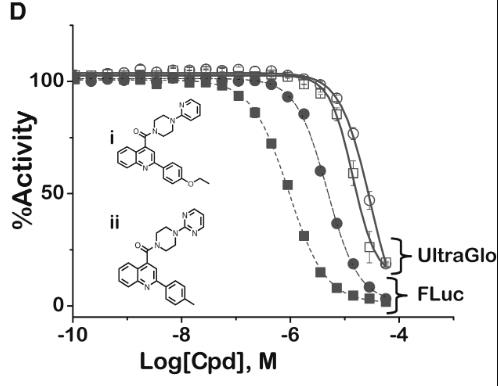
Fig1. Comparison of FLuc and Ultra-Glo luciferase inhibition potencies for quinoline analogs assayed using KM levels of substrates.
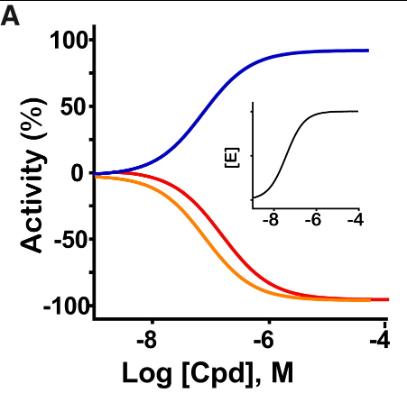
Fig2. Level of apparent reporter activation depends on properties of the luciferase inhibitor and the assay detection protocol used.
Case 2: Gibbons AE, et al. Methods Mol Biol. 2018
Bioluminescence imaging is a versatile tool for studying cell assays and disease models in living organisms, thanks to molecular engineering with luciferase. It facilitates the exploration of protein interactions, cell trafficking, and drug action in mice. This application features NanoLuc, a new luciferase from Oplophorus gracilirostris, for imaging tumors in mice and, when paired with firefly luciferase, allows simultaneous monitoring of multiple cellular processes.
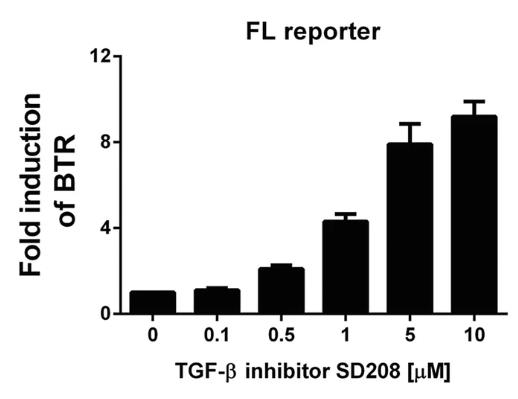
Fig1. A549 cells were treated with increasing concentrations of the TGF-β receptor inhibitor SD208.
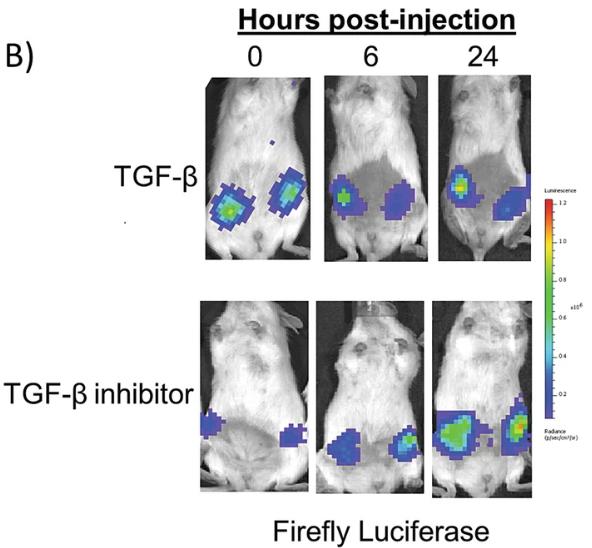
Fig2. Firefly luciferase imaging performed immediately after NL imaging shows induction of signal in mice treated with an inhibitor of TGF-β signaling.
The role of firefly luciferase in nature is to enable fireflies to emit biological light for communication, courtship and warning signals, and it can catalyze the oxidation reaction of luciferin in the presence of ATP and oxygen to produce bioluminescence. In the laboratory, it is used as a bioluminescent reporter gene to monitor gene expression, protein-protein interactions, and other biological processes. Studies have shown that the activity of luciferase in solution differs from its activity in cells, which may affect its accuracy as a reporter gene.
In molecular biology research, luciferase genes are often used as reporter genes to monitor the expression level of target genes by detecting the intensity of light. Luciferase is used to monitor cell signaling pathways, for example by constructing reporter genes that fuse with luciferase genes to study cell cycle, apoptosis, and cellular stress responses. In drug development, luciferase is used in high-throughput screening to rapidly assess the effects of compounds on specific biological processes. Luciferase has also been developed as a biosensor to detect chemicals or biomolecules in the environment. In cancer research, luciferase is used to label tumor cells to study tumor growth and metastasis. Luciferase also has applications in bioluminescent imaging techniques, such as monitoring gene expression patterns and cell activity in organisms.
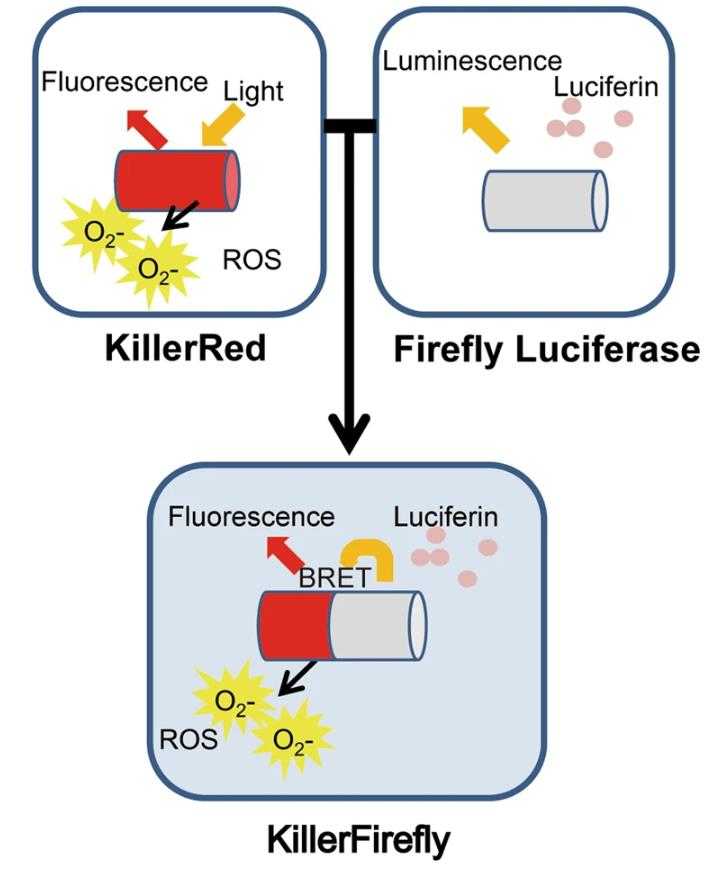
Fig1. KillerRed protein is a fluorescent protein which generates ROS when excited by yellow light. (Tetsuya Ishimoto, 2019)
Not For Human Consumption!
Inquiry
- Reviews (0)
- Q&As (0)
Ask a Question for All Luciferase Products
Required fields are marked with *
My Review for All Luciferase Products
Required fields are marked with *



